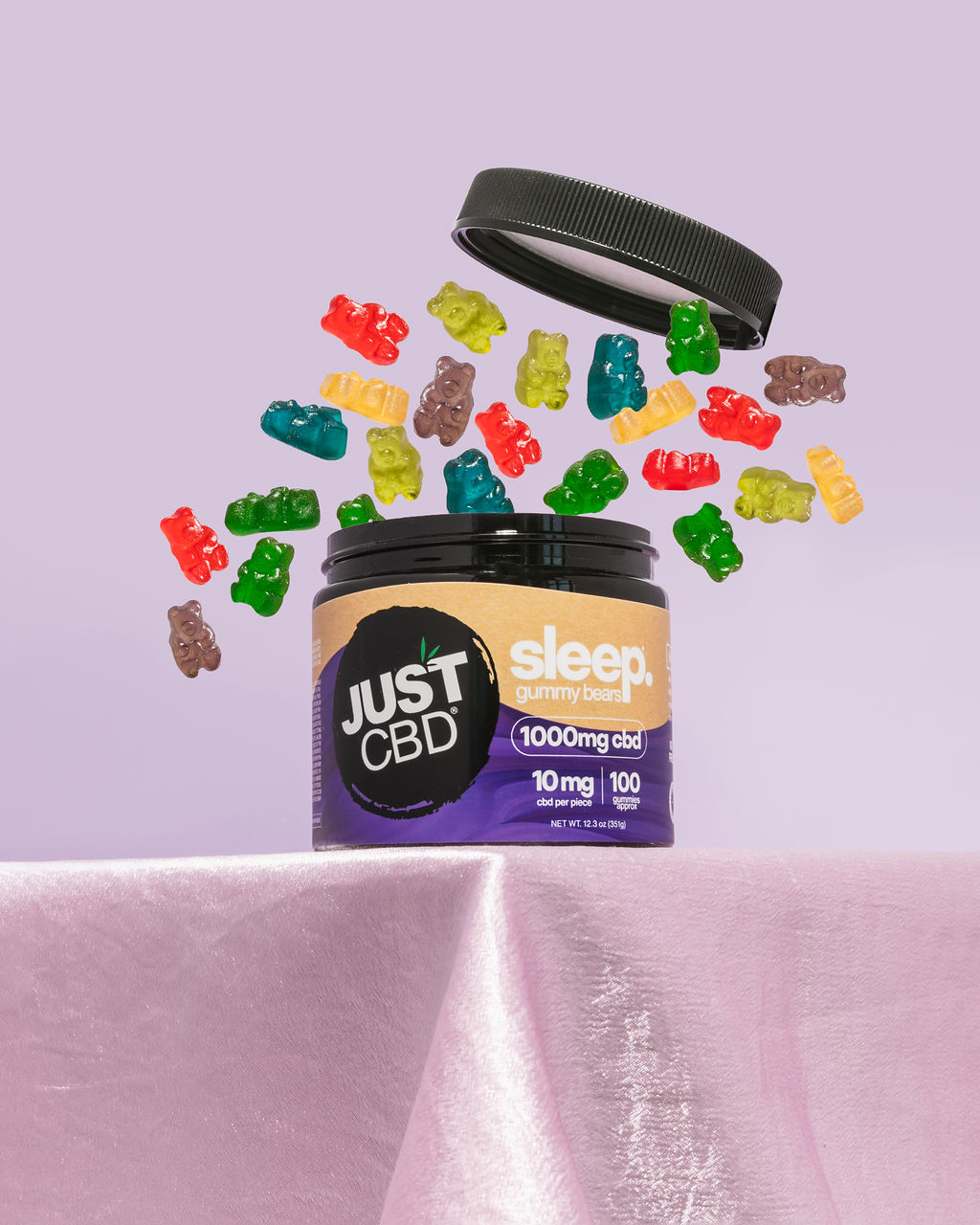How To Spot High-Quality Kratom Gummies From Low-Quality Ones
Packaging and Labeling
When navigating the world of kratom gummies, it’s crucial to differentiate between high-quality and low-quality products. Packaging and labeling play a significant role in this distinction.
Ingredients List
A reputable brand will prioritize clear and informative packaging that highlights key details about their product. Look for labels that clearly state the kratom strain used, the potency (typically expressed as mg of alkaloids per gummy), and the serving size. Legitimate manufacturers will also include a comprehensive ingredients list, specifying all components, including any additives or flavorings.
Beware of gummies with vague labeling or missing information. Unclear or incomplete ingredient lists can be a red flag, suggesting that the manufacturer may be trying to conceal potentially harmful substances.
Transparency
Additionally, pay attention to the overall presentation of the packaging. High-quality kratom gummies will typically have professional-looking labels with high-resolution graphics and clear fonts. Avoid products with blurry or unprofessional-looking packaging, which can indicate a lack of care in production.
Transparency extends beyond the label itself. Reputable brands are open about their sourcing practices and manufacturing processes. They may provide information about where their kratom is sourced from, how it is processed, and any quality control measures they employ.
Batch Number and Expiration Date
The presence of a batch number and expiration date is another indicator of product quality. A batch number allows you to trace the origins of your gummies in case of any issues, while an expiration date ensures that the product is within its safe consumption period.
Both should be clearly displayed on the label.
Product Appearance
When it comes to kratom gummies, a discerning eye can often spot the difference between high-quality and low-quality products by simply examining their appearance.
Color and Consistency
High-quality kratom gummies typically exhibit a vibrant color that is consistent throughout. The gummies should appear evenly colored and free from any streaks or patches of discoloration.

Avoid gummies with dull colors, uneven pigmentation, or signs of fading, as these could indicate lower quality ingredients or improper manufacturing processes.
The consistency of the gummy should also be examined. High-quality gummies will have a firm yet pliable texture that is neither too hard nor too soft.
They should hold their shape well and not crumble easily when handled. Gummies with a sticky, overly soft, or excessively hard consistency may suggest inferior ingredients or improper processing techniques.
Texture
High-quality kratom gummies typically exhibit a vibrant color that is consistent throughout. The gummies should appear evenly colored and free from any streaks or patches of discoloration.
Avoid gummies with dull colors, uneven pigmentation, or signs of fading, as these could indicate lower quality ingredients or improper manufacturing processes.
The consistency of the gummy should also be examined. High-quality gummies will have a firm yet pliable texture that is neither too hard nor too soft. They should hold their shape well and not crumble easily when handled. Gummies with a sticky, overly soft, or excessively hard consistency may suggest inferior ingredients or improper processing techniques.
Taste and Smell
Taste and smell are two of the most fundamental senses that contribute to our perception of food and beverages. They work in tandem to create a complex sensory experience that informs our enjoyment and satisfaction with what we consume.
Natural Aroma
Taste refers to the sensations detected by taste receptors located on the tongue, palate, and epiglottis. These receptors respond to specific chemicals in food and beverages, allowing us to perceive five basic tastes: sweet, sour, salty, bitter, and umami (savory).
Smell, on the other hand, is mediated by olfactory receptors found in the nasal cavity. These receptors detect airborne molecules released from food and beverages, sending signals to the brain that are interpreted as various aromas.
Taste and smell are intricately linked. While taste provides basic flavor information, smell contributes significantly to our overall perception of flavor.
When we eat, volatile compounds from food travel up the back of the throat and into the nasal cavity, stimulating olfactory receptors. This interplay between taste and smell creates a richer and more complex flavor profile.
For example, imagine eating a strawberry. Taste receptors on your tongue detect the sweetness and acidity of the fruit, while your nose detects its characteristic fruity aroma. This combination of taste and smell contributes to our enjoyment of the strawberry’s flavor.

Taste Profile
When it comes to kratom gummies, discerning consumers can often spot high-quality products by examining their appearance. High-quality gummies typically exhibit a vibrant color that is consistent throughout.
The gummies should appear evenly colored and free from any streaks or patches of discoloration. Avoid gummies with dull colors, uneven pigmentation, or signs of fading, as these could indicate lower quality ingredients or improper manufacturing processes.
The consistency of the gummy should also be examined. High-quality gummies will have a firm yet pliable texture that is neither too hard nor too soft. They should hold their shape well and not crumble easily when handled. Gummies with a sticky, overly soft, or excessively hard consistency may suggest inferior ingredients or improper processing techniques.
Taste and smell are two of the most fundamental senses that contribute to our perception of food and beverages. They work in tandem to create a complex sensory experience that informs our enjoyment and satisfaction with what we consume.
Taste refers to the sensations detected by taste receptors located on the tongue, palate, and epiglottis. These receptors respond to specific chemicals in food and beverages, allowing us to perceive five basic tastes: sweet, sour, salty, bitter, and umami (savory).
Smell, on the other hand, is mediated by olfactory receptors found in the nasal cavity. These receptors detect airborne molecules released from food and beverages, sending signals to the brain that are interpreted as various aromas.
Taste and smell are intricately linked. While taste provides basic flavor information, smell contributes significantly to our overall perception of flavor.
When we eat, volatile compounds from food travel up the back of the throat and into the nasal cavity, stimulating olfactory receptors. This interplay between taste and smell creates a richer and more complex flavor profile.
For example, imagine eating a strawberry. Taste receptors on your tongue detect the sweetness and acidity of the fruit, while your nose detects its characteristic fruity aroma. This combination of taste and smell contributes to our enjoyment of the strawberry’s flavor.
Third-Party Testing
When evaluating kratom gummies, it is essential to consider third-party testing as a key indicator of quality and safety.
Reputable manufacturers prioritize transparency and will have their products analyzed by independent laboratories specializing in botanical substances.
Certification Seals
Third-party testing involves sending samples of the kratom gummies to an independent laboratory for analysis. These labs are not affiliated with the manufacturer and operate with impartiality, ensuring unbiased results.
During third-party testing, the lab will assess various aspects of the product, including:
– Potency: To determine the actual amount of alkaloids present in each gummy, which is crucial for consistent dosing.
– Purity: To ensure that the gummies are free from contaminants such as pesticides, heavy metals, or microbial growth, safeguarding consumer health.
– Adulterants: To verify that no harmful or prohibited substances have been added to the gummies.
The results of third-party testing are typically made available to consumers through a Certificate of Analysis (COA). This document provides detailed information about the tested parameters and the findings.
Look for kratom gummies that prominently display a COA, as it serves as a strong indicator of quality and trustworthiness.
Transparency regarding third-party testing demonstrates the manufacturer’s commitment to providing safe and reliable products.
Reputable brands will readily share this information with consumers, enabling informed choices.
Lab Reports Accessibility
When evaluating kratom gummies, it is essential to consider third-party testing as a key indicator of quality and safety.
Reputable manufacturers prioritize transparency and will have their products analyzed by independent laboratories specializing in botanical substances.
Third-party testing involves sending samples of the kratom gummies to an independent laboratory for analysis. These labs are not affiliated with the manufacturer and operate with impartiality, ensuring unbiased results.
During third-party testing, the lab will assess various aspects of the product, including:
– Potency: To determine the actual amount of alkaloids present in each gummy, which is crucial for consistent dosing.
– Purity: To ensure that the gummies are free from contaminants such as pesticides, heavy metals, or microbial growth, safeguarding consumer health.
– Adulterants: To verify that no harmful or prohibited substances have been added to the gummies.
The results of third-party testing are typically made available to consumers through a Certificate of Analysis (COA). This document provides detailed information about the tested parameters and the findings.
Look for kratom gummies that prominently display a COA, as it serves as a strong indicator of quality and trustworthiness.
Transparency regarding third-party testing demonstrates the manufacturer’s commitment to providing safe and reliable products.
Reputable brands will readily share this information with consumers, enabling informed choices.
Reputable Vendor
In the realm of kratom gummies, discerning consumers should prioritize quality and safety. A reputable vendor will go above and beyond to provide transparency about their products, ensuring that customers can make informed decisions.
Online Reviews and Reputation
When navigating the world of kratom gummies, it’s crucial to differentiate between high-quality and low-quality products. Packaging and labeling play a significant role in this distinction.
A reputable brand will prioritize clear and informative packaging that highlights key details about their product. Look for labels that clearly state the kratom strain used, the potency (typically expressed as mg of alkaloids per gummy), and the serving size. Legitimate manufacturers will also include a comprehensive ingredients list, specifying all components, including any additives or flavorings.
Beware of gummies with vague labeling or missing information. Unclear or incomplete ingredient lists can be a red flag, suggesting that the manufacturer may be trying to conceal potentially harmful substances.
Additionally, pay attention to the overall presentation of the packaging. High-quality kratom gummies will typically have professional-looking labels with high-resolution graphics and clear fonts. Avoid products with blurry or unprofessional-looking packaging, which can indicate a lack of care in production.
Transparency extends beyond the label itself. Reputable brands are open about their sourcing practices and manufacturing processes. They may provide information about where their kratom is sourced from, how it is processed, and any quality control measures they employ.
The presence of a batch number and expiration date is another indicator of product quality. A batch number allows you to trace the origins of your gummies in case of any issues, while an expiration date ensures that the product is within its safe consumption period.
Both should be clearly displayed on the label.
When it comes to kratom gummies, a discerning eye can often spot the difference between high-quality and low-quality products by simply examining their appearance.
High-quality kratom gummies typically exhibit a vibrant color that is consistent throughout. The gummies should appear evenly colored and free from any streaks or patches of discoloration.
Avoid gummies with dull colors, uneven pigmentation, or signs of fading, as these could indicate lower quality ingredients or improper manufacturing processes.
The consistency of the gummy should also be examined. High-quality gummies will have a firm yet pliable texture that is neither too hard nor too soft.
They should hold their shape well and not crumble easily when handled. Gummies with a sticky, overly soft, or excessively hard consistency may suggest inferior ingredients or improper processing techniques.
High-quality kratom gummies typically exhibit a vibrant color that is consistent throughout. The gummies should appear evenly colored and free from any streaks or patches of discoloration.
Avoid gummies with dull colors, uneven pigmentation, or signs of fading, as these could indicate lower quality ingredients or improper manufacturing processes.
The consistency of the gummy should also be examined. High-quality gummies will have a firm yet pliable texture that is neither too hard nor too soft. They should hold their shape well and not crumble easily when handled. Gummies with a sticky, overly soft, or excessively hard consistency may suggest inferior ingredients or improper processing techniques.
Taste and smell are two of the most fundamental senses that contribute to our perception of food and beverages. They work in tandem to create a complex sensory experience that informs our enjoyment and satisfaction with what we consume.
Taste refers to the sensations detected by taste receptors located on the tongue, palate, and epiglottis. These receptors respond to specific chemicals in food and beverages, allowing us to perceive five basic tastes: sweet, sour, salty, bitter, and umami (savory).
Smell, on the other hand, is mediated by olfactory receptors found in the nasal cavity. These receptors detect airborne molecules released from food and beverages, sending signals to the brain that are interpreted as various aromas.
Taste and smell are intricately linked. While taste provides basic flavor information, smell contributes significantly to our overall perception of flavor.
When we eat, volatile compounds from food travel up the back of the throat and into the nasal cavity, stimulating olfactory receptors. This interplay between taste and smell creates a richer and more complex flavor profile.
For example, imagine eating a strawberry. Taste receptors on your tongue detect the sweetness and acidity of the fruit, while your nose detects its characteristic fruity aroma. This combination of taste and smell contributes to our enjoyment of the strawberry’s flavor.
In addition to evaluating appearance, potency, purity, and labeling practices, researching online reviews can provide valuable insights into a vendor’s reputation.
Look for reputable websites or platforms that specialize in kratom product reviews. Read through a variety of reviews to get a balanced perspective on the vendor’s products and customer service.
Pay attention to both positive and negative feedback, as they can highlight strengths and weaknesses of the vendor. Look for patterns in the reviews. If multiple reviewers mention consistent issues with quality, shipping delays, or customer support, it may be a red flag.
Remember that individual experiences can vary, but looking for trends in online reviews can help you make a more informed decision about which vendor to choose.
In the realm of kratom gummies, discerning consumers should prioritize quality and safety. A reputable vendor will go above and beyond to provide transparency about their products, ensuring that customers can make informed decisions.
Customer Service
When evaluating kratom gummies, it is essential to consider third-party testing as a key indicator of quality and safety.
Reputable manufacturers prioritize transparency and will have their products analyzed by independent laboratories specializing in botanical substances.
Third-party testing involves sending samples of the kratom gummies to an independent laboratory for analysis. These labs are not affiliated with the manufacturer and operate with impartiality, ensuring unbiased results.
During third-party testing, the lab will assess various aspects of the product, including:
- Potency: To determine the actual amount of alkaloids present in each gummy, which is crucial for consistent dosing.
- Purity: To ensure that the gummies are free from contaminants such as pesticides, heavy metals, or microbial growth, safeguarding consumer health.
- Adulterants: To verify that no harmful or prohibited substances have been added to the gummies.
The results of third-party testing are typically made available to consumers through a Certificate of Analysis (COA). This document provides detailed information about the tested parameters and the findings. Look for kratom gummies that prominently display a COA, as it serves as a strong indicator of quality and trustworthiness.
Transparency regarding third-party testing demonstrates the manufacturer’s commitment to providing safe and reliable products. Reputable brands will readily share this information with consumers, enabling informed choices.
Order Kratom Gummies that support your wellness
- Why Does Lip Filler Migrate Above Lip - November 7, 2025
- What Is The Best THC Liquid? - November 4, 2025
- What Are The Best CBD Gummies For Relaxation And Stress Relief? - November 2, 2025

